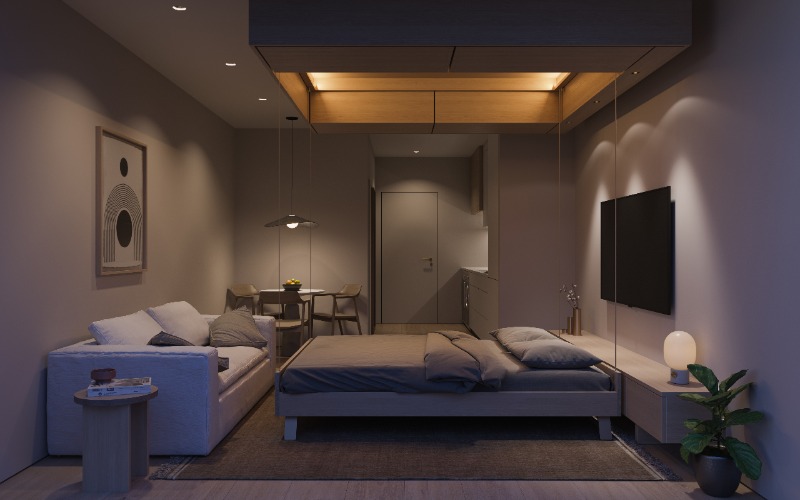Many articles on smart home technology, including ones that I’ve written, present smart home technology in terms of a suburban setting. The articles assume a multi-bedroom suburban home with a nice yard and not small spaces.
However, that is not the case for those who live in city apartments or condominiums. According to a post by Platinum Properties in New York, “RCLCO, an analytics firm specializing in real estate data, compiled a study in 2016 that showed the average size of an apartment building in New York City since 2000 is 866 square feet. They also reported that more than half the apartments in competitive markets like New York are 700 square feet or less in size.”
With this in mind, an article focusing on smart home technology for small spaces was needed. There are many articles about maximizing the space in a small apartment. Some ideas from these articles include:
- Using room dividers to create zones and privacy.
- Using furniture that provides multiple functions; for example, a dining room table can be used for eating at mealtimes or as a desk at other times of the day.
- Utilize all the available space. For example, you could place benches for seating or bookcases for storage in alcoves in front of windows to utilize a space that might otherwise go unused.
- And more…
However, there are ways that smart home technology can also be used to create more space in an apartment.
Robotic Furniture
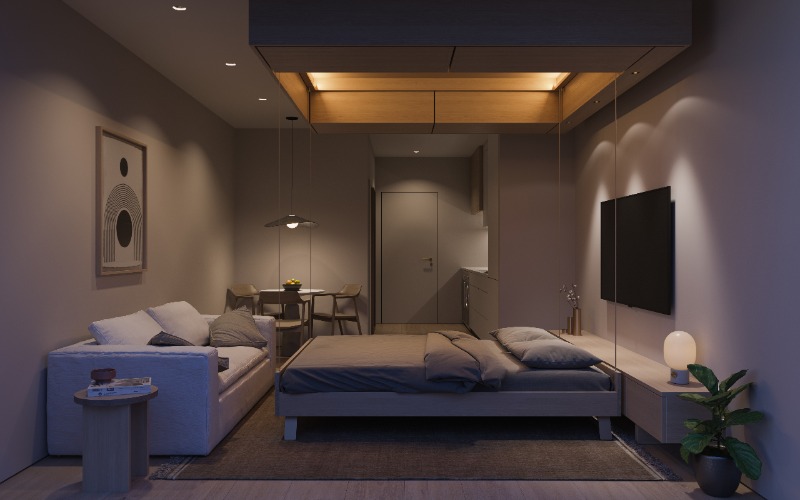
Bumblebee Spaces is a San Francisco company “driven to minimize human footprint, while radically improving the living experience.” Bumblebee Spaces was founded in 2017 by Sankarshan Murthy, a veteran of Apple and Tesla. They offer both stationary pieces of furniture and robotic pieces that disappear into the ceiling of an apartment.
Their furniture system consists of:
- A bed that is raised into the ceiling for storage and lowered from the ceiling for use.
- Storage units that replace dressers. These can individually be raised into the ceiling for storage and lowered for access.
- A stationary workstation that converts into a headboard with nightstands when the bed is lowered for sleeping. The workstation includes a pull-out keyboard drawer, space for multiple monitors, built-in outlets— to power electronics, and space for storage.
- A stationary console that converts into a headboard with nightstands when the bed is lowered for sleeping. When the bed is raised, it can be used for seating or to display knick-knacks. Storage within the console can, for example, be used to hide electronics needed for a TV that could be mounted above the console.
For safety, the system includes technology to scan the area below where the furniture will be lowered to ensure it is clear of obstructions and people.
While the Bumblebee system is certainly designed to maximize the utility of small spaces, this system could also be used in a home to create a multi-functional space. For example, the bed and workstation could create a home office that converts into a guest room when needed.
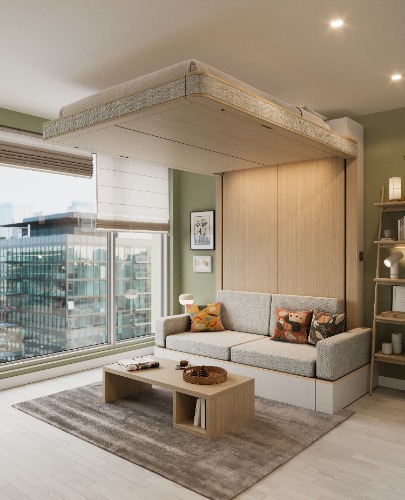
Ori Design Studio is a Brooklyn, New York company that also manufactures a line of robotic furniture. They offer queen-sized, cloud beds (ceiling mounted) that convert to a sofa, desk, or table when raised. They also offer robotic systems where the bed slides into a pocket within a large, movable furniture unit that provides large storage. The movable unit can include space for a TV, shelving, or a fold-down desk.
Ori, however, has a different business model. Instead of selling directly to consumers, Ori sells to developers who have Ori robotic furniture systems installed in apartments they offer to consumers (Bumblebee systems also will sell to developers). The Ori website provides search tools for consumers to find apartment buildings that include units with their furniture systems installed.
Removing Clutter
Clutter can make any room look smaller. But its effect on an already small apartment can be even more pronounced. Fortunately, there are smart home technology options to help keep an apartment neat and clean.
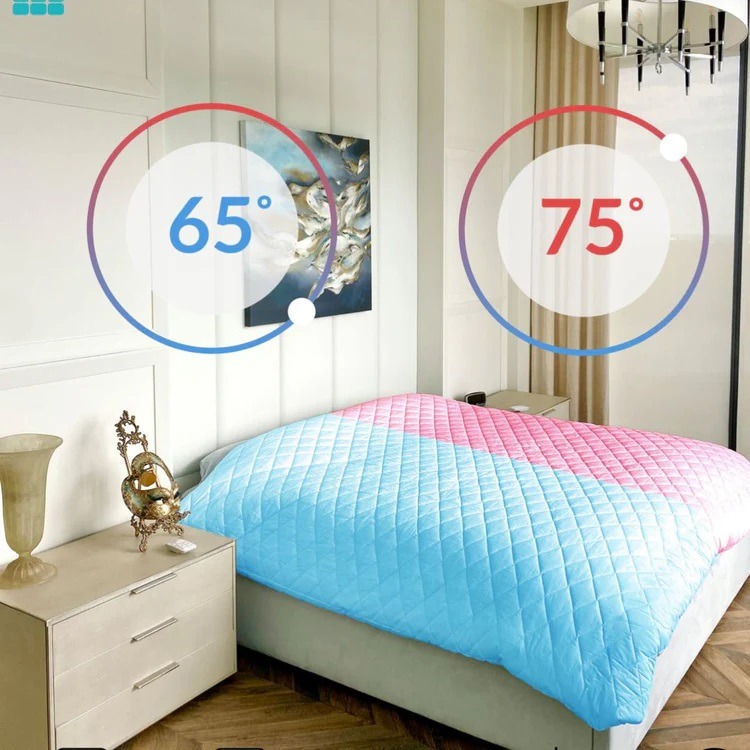
An unkempt bed often becomes the focal point in a small room. Smartduvet uses conditioned air that individually heats/cools each person’s side of the bed to provide a comfortable night’s sleep. In addition, their unique technology leverages the same air pumped into the bed for comfort to make the bed.
A control box distributes air evenly at your desired temperature to your selected side of the bed. The air can be heated to a specific temperature to keep you warm. Or, on warmer nights, the Smartduvet circulates room-temperature air under the duvet to cause the moisture released by your skin to evaporate. This cools your body in the same way a breeze cools you on a warm day outside.
By heating/cooling your body directly, the Smartduvet saves on utility bills by allowing you to set back your thermostat.
To make the bed, the Smartduvet uses patented technology to pump air into the air chambers built into the Smartduvet. This air forces the duvet to return to its flattened shape regardless of how badly the duvet has become twisted or folded (see a YouTube video below).
Smartduvet is Alexa compatible allowing it to be integrated with a goodbye scene so the bed is automatically made when the homeowners leave their apartment.
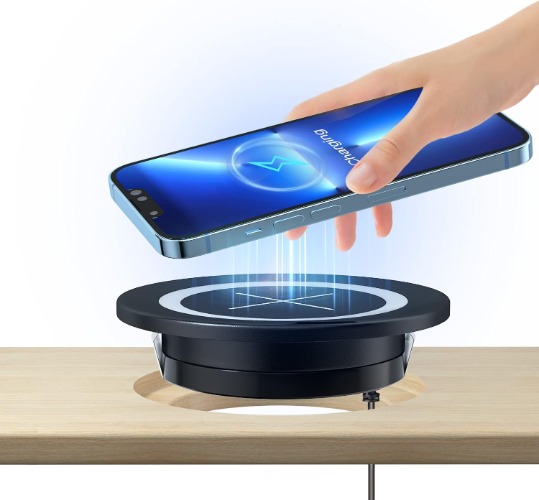
Decluttering can visually create more space in a small room to make it feel bigger. According to Architectural Digest, the number one way to reduce visual clutter in a small room is to “disguise exposed cords”. And, when you think about how many smart devices each person owns, the number of chargers and cords used around an apartment/home makes them a significant contributor to clutter.
Wireless charging offers a way to visually declutter, especially when the charger is built into a piece of furniture. Most wireless chargers simply sit on top of a piece of furniture and add to the clutter of a room. However, there are wireless chargers that allow a homeowner to incorporate the wireless charger into the top of a piece of furniture. For example, the charger shown above, available on Amazon, is highly rated and designed to fit into a standard-sized cable feed-through hole. These holes are included in many modern desks and other pieces of furniture. If your furniture doesn’t include cable feed-through holes, and you have DIY skills, you can purchase the correct tools to cut the proper-sized hole and build wireless charging into any piece of furniture.
The numerous cables that connect power and video sources to a TV are another source of visual clutter. There are many different solutions for managing and hiding these cables but the correct choice depends on where your TV is located in a room. For example, if the TV is mounted on a wall, then there are easy-to-install cable management solutions that route the cables within the wall that the TV is mounted on. Of course, if you live in an apartment, you won’t want to cut holes in your wall so channels that mount on the wall and hide the cables would be a better solution. If your TV sits on a piece of furniture, then cable straps, like the ones shown below, are a good solution. Finally, there are console tables with lift mechanisms built in that can completely hide a TV when not in use. I’ll be digging into this topic more in an upcoming article.
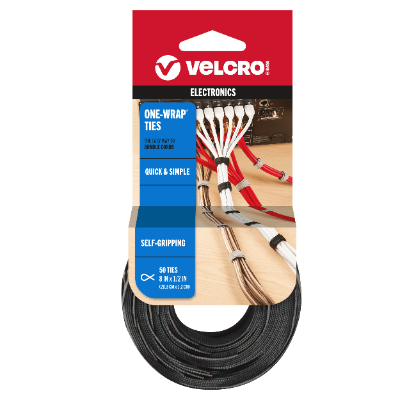
Power cords lying on the floor also create visual clutter. While these cords can’t be completely eliminated, they can be cleaned up by gathering up the excess. There are many inexpensive products sold that can be used to neatly hold excess cords including zip ties and Velcro wire wraps.
Conclusion
Smart home technology can be just as important in a small urban apartment as in a larger home in suburbia. An apartment owner won’t need some smart home devices designed for suburban living, such as a smart lawn mower. However, robotic furniture, a bed that makes itself, and devices that reduce clutter can make a small spaces much more convenient to live in and visually appealing.



